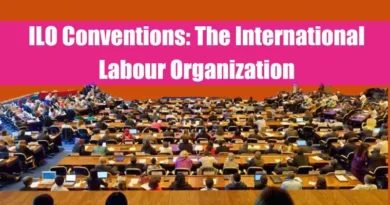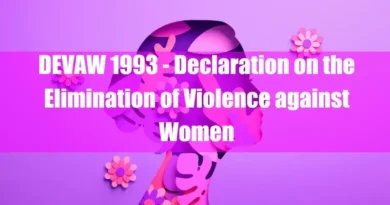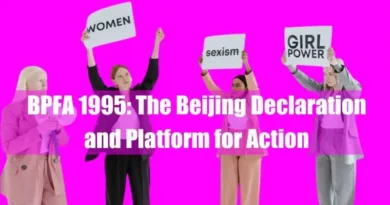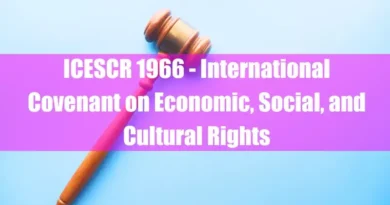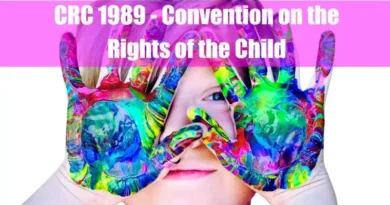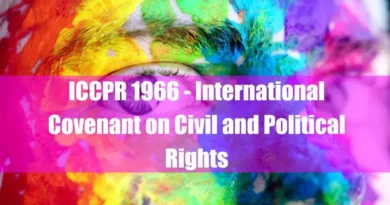I. Introduction
The Convention on the Elimination of All Forms of Discrimination Against Women (CEDAW) 1979 emerges as a pivotal force, transcending mere legal text to become a beacon of hope for millions worldwide. This landmark treaty signifies a paradigm shift towards acknowledging women’s rights as fundamental human rights, catalyzing a movement that resonates far beyond legislative chambers. CEDAW isn’t just another document; it’s a testament to decades of activism, a rallying cry for equality reverberating across borders and generations.
CEDAW is more than a legal framework; it’s a roadmap for tangible change, charting a course toward a world where women are afforded the same opportunities and freedoms as their male counterparts. From education and employment to health and political participation, its comprehensive scope addresses the multifaceted challenges of gender discrimination.
Yet, CEDAW’s impact isn’t confined to rhetoric; it’s grounded in action. The convention holds states accountable through a dynamic monitoring, reporting, and advocacy process, urging them to translate words into deeds. Like a trusted guide on a journey of self-improvement, CEDAW navigates the complexities of gender inequality, empowering nations to strive for a more just and equitable future.
CEDAW’s Articles:
- Article 1: Defines discrimination against women
- Article 2: Defines State Parties’ obligations to eliminate discrimination
- Article 3: Guarantees the principle of equality
- Article 4: Allows for temporary special measures to accelerate progress towards equality
- Article 5: Calls for States’ Parties to modify social and cultural patterns that perpetuate discrimination
- Article 6: Calls for States Parties to take measures to suppress all traffic in women and exploitation of prostitution of women
- Article 7: Guarantees women the right to vote in all elections and be eligible for election to all publicly elected bodies
- Article 8: Calls for state parties to ensure women’s participation in government policy-making and implementation
- Article 9: Guarantees women equal rights to hold public office and participate in non-governmental organizations
- Article 10: Guarantees women the right to education on an equal basis with men
- Article 11: Guarantees women the right to work on an equal basis with men, including equal opportunities and equal pay for equal work
- Article 12: Guarantees women access to equal healthcare services on the same conditions as men, including reproductive health services
- Article 13: Guarantees women the right to family benefits on an equal basis with men
- Article 14: Guarantees women equal rights and responsibilities as men in matters relating to marriage and family
- Article 15: Guarantees women the right to choose a spouse and to enter into marriage only with their free and full consent
- Article 16: Calls for States Parties to take measures to eliminate all forms of discrimination arising from marriage and family relations
- Article 14 (reiterated): Specifically addresses the need to eliminate discrimination against women in rural areas
- Article 13 (reiterated): Guarantees women equal access to economic and social benefits
- Article 16 (reiterated): Calls for States Parties to take measures to eliminate discrimination against women in economic and social life
- Article 10 (reiterated): Calls for States Parties to include education and public awareness programs on women’s rights in their curricula
- Articles 17-22: Establish procedures for reporting on progress made in implementing CEDAW, including the creation of a CEDAW Committee to review State reports
- Articles 23-30: Address issues such as entry into force, amendments, settlement of disputes, and withdrawal
Also, read:
- VDPA 1993: Vienna Declaration and Programme of Action
- ILO Conventions: The International Labour Organization
- ICCPR 1966 – International Covenant on Civil and Political Rights
II. Articles 1-6 – Defining Discrimination and Obligations to Eliminate It

A. Defining Discrimination Against Women: Article 1
Article 1 establishes a clear definition of discrimination against women. This ensures everyone involved interprets the Convention consistently.
B. Obligations of State Parties: Article 2
Article 2 outlines countries’ actions to eliminate discrimination against women. This includes revising laws, policies, and social attitudes.
C. Women’s Empowerment and Development: Article 3
Article 3 takes a broader perspective, emphasizing the importance of achieving women’s full development and advancement. It goes beyond simply eliminating discrimination and aims to create opportunities for women to thrive.
D. Temporary Special Measures: Article 4
Article 4 addresses concerns about “special measures” favoring women. It clarifies that these measures are not unfair advantages but rather ways to level the playing field. They are temporary actions intended to accelerate progress toward equality for women who may have faced historical disadvantages.
E. Challenging Social Norms and Stereotypes: Article 5
Article 5 tackles the root causes of discrimination: social norms and stereotypes. It calls for dismantling these rigid expectations about how men and women should behave, allowing individuals greater freedom and removing barriers to equality.
F. Combating Trafficking and Exploitation: Article 6
Article 6 focuses on protecting women from all forms of exploitation, including trafficking. It signifies a strong commitment to combating these serious violations of women’s rights.
Also, read:
- UDHR – Universal Declaration of Human Rights (1948)
- DEVAW 1993 – Declaration on the Elimination of Violence against Women
- Explaining Quid Pro Quo Harassment Under Title IX
- Quid Pro Quo Harassment: What It Is? Know Everything
III. Articles 7-9 – Public Life and Participation
A. Political Participation and Equality: Article 7
Article 7 guarantees women’s equal rights to participate in political and public life. This includes the right to vote, hold office, and participate in decision-making that affects their communities and societies. It dismantles barriers that might have previously excluded women from these crucial areas.
B. Women in Government Policy: Article 8
Article 8 ensures women’s voices are heard in shaping government policies. It calls for state parties to actively involve women in the development and implementation of policies across all levels of government. This ensures a more inclusive and representative approach to governance.
C. Nationality Rights for Women and Families: Article 9
Article 9 addresses the issue of nationality. It guarantees women equal rights with men regarding acquiring, changing, or retaining their nationality. This extends to their children as well, ensuring families are not disadvantaged by outdated nationality laws. The article promotes equal citizenship rights for all.
Also, read:
- Understanding Microaggressions Intervention Strategies
- Microassaults: Everyday Indignities with Lasting Impacts
- Understanding & Addressing Microinsults
- Understanding Microinvalidations
IV. Articles 10-14 – Education, Employment, Health, and Economic and Social Benefits
A. Equal Access to Education: Article 10
Article 10 guarantees women’s right to education on an equal basis with men. This ensures girls have the same opportunities as boys to pursue education at all levels, from primary school to university. It removes barriers that might have previously prevented women from achieving their full educational potential.
B. Equal Rights in Employment: Article 11
Article 11 focuses on ensuring women’s equal rights in the workplace. It guarantees equal opportunities and treatment compared to men, including equal pay for equal work, job security, and maternity leave. This article dismantles discrimination and promotes a work environment where women’s skills and contributions are valued.
C. Women’s Right to Health: Article 12
Article 12 emphasizes women’s right to access quality healthcare services under the same conditions as men. This includes access to reproductive health services and prioritizes women’s health needs. The article calls for a healthcare system that treats women’s well-being as a critical aspect of their overall well-being.
D. Economic and Social Benefits for Women: Article 13
Article 13 guarantees women equal access to economic and social benefits. This includes access to bank loans, mortgages, and social security benefits. It empowers women to participate fully in the economic sphere and gives them the resources they need to thrive.
E. Addressing Discrimination Against Rural Women: Article 14
Article 14 acknowledges the specific challenges faced by women living in rural areas. It calls for state parties to take measures to eliminate discrimination against these women and ensure they have equal access to healthcare, education, and social services. The article recognizes rural women’s vital role in their communities and societies and calls for their needs to be addressed.
Also, read:
- ICESCR 1966 – International Covenant on Economic, Social, and Cultural Rights
- ICERD 1965 – International Convention on the Elimination of All Forms of Racial Discrimination
- Understanding Domestic Quid Pro Quo Harassment
- Understanding Quid Pro Quo Harassment in Relationships
- LGBTQ+ Vulnerability: Addressing Sexual Harassment
V. Articles 15-30 – Equality Before the Law and in Family Life
A. Legal Equality for Women: Article 15
Article 15 guarantees women’s right to equality before the law. This ensures women have the same legal rights as men, including signing contracts, owning property, and participating in legal proceedings. It dismantles discriminatory legal practices that might have previously disadvantaged women.
B. Eliminating Discrimination in Family Matters: Article 16
Article 16 focuses on eliminating discrimination against women in matters relating to marriage and family life. It promotes equal rights and responsibilities for women and men within families. This includes the right to choose a spouse, freely enter into marriage, and control their reproductive choices. The article emphasizes the importance of building families based on equality and partnership.
C. The CEDAW Committee: A Watchdog for Equality: Article 17
Article 17 establishes the CEDAW Committee, a body of independent experts tasked with monitoring the implementation of the Convention. The Committee reviews reports submitted by state parties and makes recommendations to ensure they uphold their obligations under CEDAW. It acts as a watchdog mechanism, holding countries accountable for their progress towards gender equality.
D. Functions and Powers of the CEDAW Committee: Articles 18-22
Articles 18-22 define the specific functions and powers of the CEDAW Committee. These include reviewing state reports, conducting inquiries, and making recommendations to address identified gaps or areas where improvement is needed. The articles also establish procedures for communication and interaction between the Committee and state parties.
E. Reporting Requirements for State Parties: Articles 23-24
Articles 23-24 address the reporting requirements for state parties under CEDAW. These articles outline the information that countries must submit to the Committee regularly, detailing the measures they have taken to implement the Convention and the progress achieved in promoting gender equality. It establishes a system of accountability and transparency.
F. Concluding Provisions: Articles 25-30
Articles 25-30 cover the concluding provisions of CEDAW. These include details about the Convention’s entry into force, amendments, dispute resolution mechanisms, and the possibility of withdrawal. They ensure the smooth functioning and legal framework for the Convention’s implementation.
Also, read:
- Explaining Sex or Gender-Based Quid Pro Quo Harassment
- Explaining Age-Oriented Quid Pro Quo Harassment
- Explaining Color-oriented Quid Pro Quo Harassment
- Explaining Bystanders vs. Quid Pro Quo Harassment
VI. The Role of National and International Mechanisms
A. Monitoring Implementation: The CEDAW Committee
The CEDAW Committee plays a critical role in monitoring state party compliance with the Convention. This committee, composed of independent experts, reviews reports submitted by countries and assesses their progress in achieving gender equality. They make recommendations and offer guidance to states on areas where improvement is needed. The Committee acts as an independent oversight body, ensuring accountability for the implementation of CEDAW.
B. State Party Reporting Requirements
State parties under CEDAW are required to submit regular reports on their implementation of the Convention. These reports detail the measures they have taken to promote gender equality and the challenges they face. The reporting process allows for a systematic evaluation of progress and identifies areas where further action is necessary. It fosters transparency and accountability for state parties.
C. General Recommendations: Guidance for States
The CEDAW Committee issues General Recommendations on specific issues related to women’s rights. These recommendations provide authoritative interpretations of the Convention and offer concrete guidance to states on how to effectively implement its provisions. They address a wide range of topics, from eliminating violence against women to ensuring women’s participation in political and public life. General Recommendations serve as a valuable resource for states in their efforts to achieve gender equality.
D. Optional Protocol: An Additional Layer of Protection
The Optional Protocol to CEDAW is a legal instrument that allows individuals and groups to petition the CEDAW Committee directly. This mechanism provides an additional layer of protection for women’s rights by allowing them to seek redress for alleged violations of the Convention. The Optional Protocol strengthens the enforcement capacity of CEDAW and empowers individuals to hold their governments accountable.
E. Civil Society and NGOs: Key Actors in Advocacy
Civil society organizations (CSOs) and Non-Governmental Organizations (NGOs) play a crucial role in promoting gender equality. These organizations work at the grassroots level to raise awareness, advocate for policy change, and support women’s rights initiatives. They serve as a bridge between communities and governments, ensuring that the voices of women are heard and their needs are addressed. CSOs and NGOs are key actors in driving progress towards a more gender-equal world.
- CRPD 2006 – Convention on the Rights of Persons with Disabilities
- CRC 1989 – Convention on the Rights of the Child
- GINA – Genetic Information Non-discrimination Act 2008
VII. Challenges and Critiques of CEDAW
A. Reservations to CEDAW
States have the right to enter reservations to CEDAW when ratifying the Convention. These reservations express concerns about specific articles or provisions that may conflict with national legislation or cultural norms. While reservations can be a useful tool for encouraging broader state acceptance of the Convention, they can also weaken its impact if they limit the scope of obligations undertaken by states. It’s important to ensure that reservations are specific, limited in scope, and withdrawn as soon as the underlying reasons are no longer applicable.
B. Challenges with Enforcement
CEDAW lacks a strong enforcement mechanism. The Committee can only make recommendations and doesn’t have the power to impose sanctions on non-compliant states. Enforcing CEDAW relies on political will, resource allocation, and the commitment of national governments and civil society to hold each other accountable. Despite these challenges, the Committee plays a crucial role in monitoring progress and identifying areas for improvement.
C. Cultural Relativism and Gender Equality
Cultural relativism, the idea that cultural practices should be respected, can be a challenge in promoting gender equality. While it’s important to be sensitive to cultural differences, cultural traditions can sometimes be used to justify discriminatory practices against women. The key is to balance respecting cultural diversity and upholding universal human rights principles enshrined in CEDAW. This requires ongoing dialogue and a shared commitment to achieving gender equality within a multicultural world.
D. Progress Made and Challenges Remain
CEDAW has undoubtedly been a powerful tool for advancing gender equality worldwide. It has led to significant progress in women’s education, health, and political participation. However, gender equality gaps persist. Violence against women remains a serious problem, and women continue to be underrepresented in leadership positions. Addressing these ongoing challenges requires sustained efforts by governments, civil society, and international institutions to fully implement CEDAW’s provisions.
Also, check out:
- BPFA 1995: The Beijing Declaration and Platform for Action
- Fair Housing Act (FHA) of 1968
- The Protect from Exploitation Act (PROTECT) 2003
VIII. The Future of CEDAW and Conclusion
A. Strengthening the Foundation: Implementation
The future of CEDAW lies in its implementation. More is needed to sign on the dotted line; countries must walk the talk and turn promises into action. From strengthening laws to investing in women’s empowerment, there’s no shortage of ways to move the needle towards gender equality.
B. Charting a New Course: Future Directions
As the world evolves, so too must CEDAW. There’s always room for improvement, from addressing emerging issues like digital rights to ensuring intersectional approaches. By staying ahead of the curve and adapting to changing times, CEDAW can remain relevant and effective in fighting for gender equality.
C. A Beacon of Hope: Conclusion
In a world fraught with inequality and injustice, CEDAW stands as a beacon of hope. It reminds us that change is possible and that we can build a future where women and men are equal. So, let’s roll up our sleeves, join hands, and continue the journey towards a more just and equitable world.




